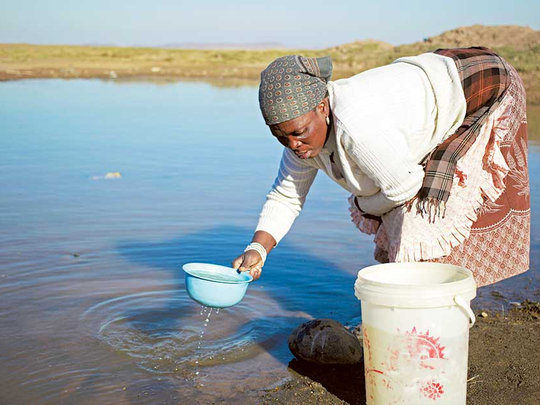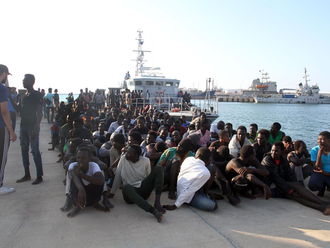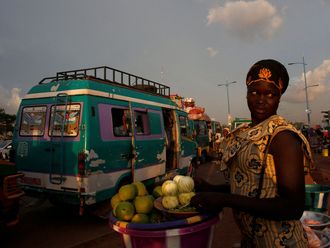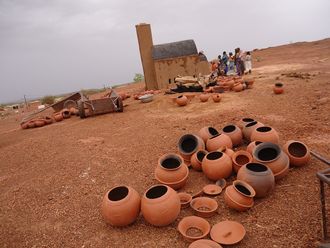
Johannesburg: African women are breaking their backs to get water for their families.
Four years after the United Nations (UN) announced that it had halved the number of people without access to cleaner water, a new analysis shows that getting to that water is still a major hardship for much of sub-Saharan Africa.
More than two-thirds of that region’s population still must leave home to collect water and haul it as far as two football fields — back-breaking work that in 24 countries falls mostly on women and children carrying buckets as heavy as 18kg. The result is “fatigue, musculoskeletal damage and early degenerative bone and soft tissue damage” for individuals who often are already frail, according to the analysis, which was published Wednesday in the journal PLOS One.
In households that spent 30 minutes to collect water from a well or some other protected source, the water bearers included 13.5 million women and 3.4 million children living in countries such as Niger, Ethiopia, Cameroon, Burundi, South Africa, Liberia and the Ivory Coast. Girls vastly outnumbered boys, 62 per cent to 38 per cent, the analysis found. Adult women tasked with water collection ranged from about 45 per cent in Liberia to 90 per cent in the Ivory Coast.
Jay Graham, an assistant professor at George Washington University, said he undertook the analysis with the help of two graduate students because the impact of constant water collection has been overlooked, with few scientific studies or reports on the topic. As the world works toward improving water sources through the UN Millennium Development Goals, the labour of retrieving it should be considered, he said.
When measuring progress, the analysis suggests, the time and toll on children and women should be taken into account.
“Water transport can take considerable time and energy, placing high demands on the metabolism, and result in pressure on the skeletal system leading to early arthritis,” the analysis said. “People who carry water may be more prone to injury in rural areas due to higher rates of poverty, chronic malnutrition and poor health.”
There also are consequences for sanitation and hygiene. Researchers think hauling water by hand and foot is so labour-intensive that “people collect less, so there’s no hygiene in the home. You don’t want to use it up on hand-washing,” Graham said.
“What I’m trying to do is highlight that we’ve been measuring one aspect, where the water comes from,” Graham said. “We’re totally missing this other metric: how long people are spending collecting water and the gender inequality associated with water collection.”
Public-health officials in Africa and across the world have rightly zeroed in on quality, he said, “but we don’t focus on things like ... the health impacts that are indirect: faster pregnancy for girls who miss school to do the work and a shorter lifespan. This is going to become more exacerbated with climate change as people are expected to walk further.”
Even in a more developed country such as South Africa, more than half of water bearers were adult women. Nearly a third were girls.
The analysis references reports that said reduced water collection carried benefits for women in the Namaqualand region of South Africa, providing nearly an hour of extra rest per day and time spent with children. Other observational reports in the country showed the effects of water collection on children including fatigue, early dismissal from school and difficulty focusing on studies while in class.
The authors said their analysis relied on data from two major international surveys, the Multiple Indicator Cluster Surveys conducted by governments in collaboration with UNICEF, and the Demographic and Health Survey conducted by the ICF International and funded by the US Agency for International Development. It covered the sub-Saharan countries that had conducted those two surveys between 2005 and 2012.
Graham said the report started a year ago, but missed its anticipated release date on World Water Day in November because PLOS One took six months to confirm the findings.












